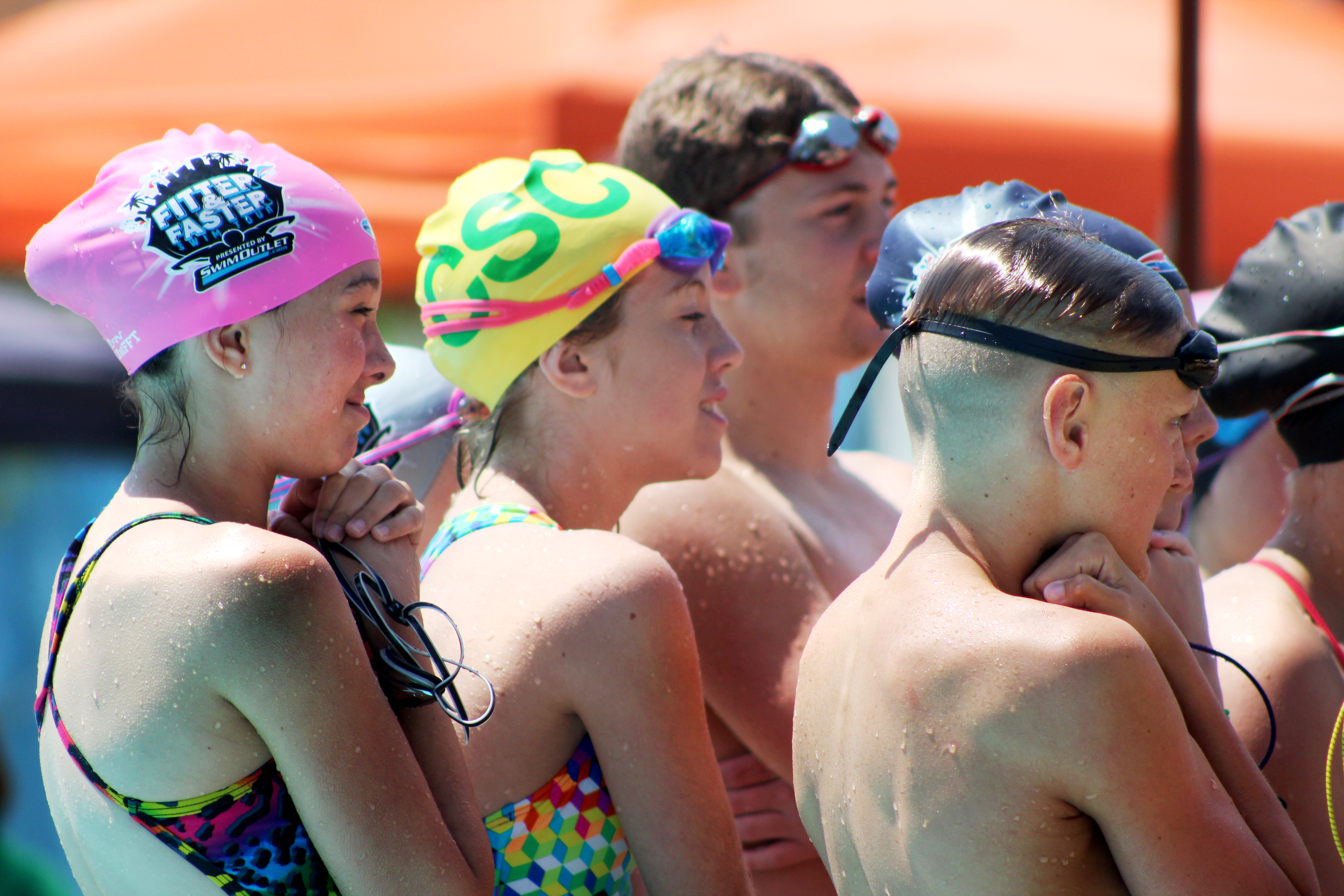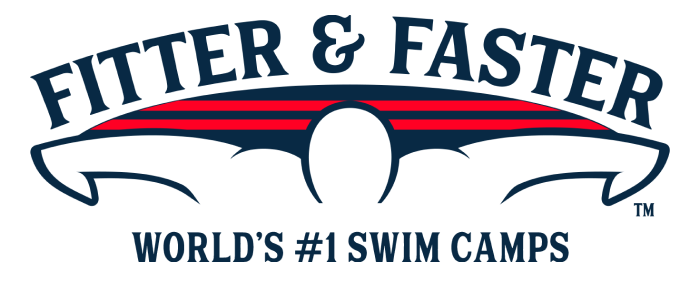By: Jennifer Brunelli, MS RD LDN – Brunelli is a 7-time All-American swimmer and sports dietitian for the Carolina Panthers NFL team. She is a member of the University of South Carolina Athletic Hall of Fame.
Very few sports require the same physical demands as competitive swimming. The hours required to put in the yardage for the cardiovascular or endurance needs of our sport, along with the time needed to achieve a specific level of technique in order to touch someone out by tenths — or even hundredths of a second — are tremendous. Nutrition plays a key role in surviving the physical stresses of our sport, while also managing the mental pressures.
Recovery from pool training is arguably the most important aspect of our sport. You can break yourself down every day or even twice a day. But if you do not give your body the opportunity to rebuild, you will never see the gains from all your hard work. Completing an intense workout creates muscle breakdown (so you can build back even stronger) and a significant amount of inflammation (that feeling of being so sore that you cannot get your arms over your head to put your shirt on after practice). Focusing on the when, what, and how (as in how much much food and drink you need) is extremely important if you want to see improvements.
- When: The when is based on the intensity and length of a workout. Glycogen is carbohydrate stored in the muscle. Muscle glycogen is the main fuel source used during aerobic exercise like swimming. If you are only doing an hour workout it is less important to take in food immediately after you finish. However, if you are doing a typical 90 minute to 2- hour-plus workout, it is extremely important that you consume carbohydrates and protein immediately after practice. Following a high intensity training session, your muscles are primed to absorb and utilize fuel more efficiently. What does that mean? It means you can replenish glycogen stores immediately, recover faster, and get stronger if you eat right after a heavy practice.
- What: What you choose to eat should always include a variety of options. There are no “perfect” foods. Some are better than others and you should regularly include healthy foods like fruits, vegetables, beans and whole grains. But it is OK to have an occasional slice of pizza!
 Make sure your meals include a mix of whole-grain carbohydrates like breads and pastas, nutrient-rich vegetables like spinach and red bell peppers , anti-inflammatory fruits like cherries and berries as well as lean proteins including fish and beans. High-glycemic-index foods such as white breads and crackers, dextrose-based candies, and supplements containing maltodextrin provide carbohydrates, can be absorbed quickly, which makes them ideal for post-workout recovery meals.
Make sure your meals include a mix of whole-grain carbohydrates like breads and pastas, nutrient-rich vegetables like spinach and red bell peppers , anti-inflammatory fruits like cherries and berries as well as lean proteins including fish and beans. High-glycemic-index foods such as white breads and crackers, dextrose-based candies, and supplements containing maltodextrin provide carbohydrates, can be absorbed quickly, which makes them ideal for post-workout recovery meals.
Focus on getting high-protein foods after workout as well. Once breakdown is created during training, it will continue for hours post-workout if you do not take in the necessary nutrients. To repair and rebuild, you need 20-40 grams of protein with 3-5 grams leucine. You can get what you need from chicken, grass-fed beef, fish, beans, cheese, nuts and seeds. Muscle tissue is sensitive to nutrients for up to 48 hours post-workout. It is vital to consume protein throughout the day. For athletes looking for a helpful supplement, whey protein is ideal due to its quick release into the bloodstream. If you depend on post-workout supplements or shakes, be sure to include both carbohydrates and protein. (Carbohydrates can decrease muscle protein breakdown.)
Don’t forget to include anti-inflammatory foods in your diet to accelerate the recovery process. Three easily accessible, well-researched, and delicious ways to do this are to incorporate tart cherry juice, ginger, and turmeric into your meals. Tart cherry juice can be a refreshing addition to your post-workout fluid options in addition to decreasing soreness. Ginger can actually be used to decrease pain levels. It is appealing in chicken marinades, soups and stir-frys, or can easily be grated and added to hot tea. Finally, there’s turmeric, a spice commonly found in Indian cuisine. However, it can also be taken as a supplement. If you go this route, make sure the supplement also contains black pepper, which aids absorption of the turmeric and its active ingredient, curcumin.
Fluid losses not only cause performance losses through cramping, but can also impact an athlete’s ability to focus and perceive hunger signals. Performance deficits can occur once you lose more than 2 percent of your body weight. A great way to ensure you stay well-hydrated is to weigh yourself before and after a workout. For every pound that is lost, consume 20-24 oz of fluids, including water, sports drinks, juice, milk, etc. It may sound gross, but if you can produce pale, lemonade-colored urine, that means your hydration is on track.
Bottom line: If you can stay well-hydrated and fueled throughout the season, the odds for time drops and technique improvements will be in your favor.
| Protein and Leucine Rich Foods | ||||||
| Snack | Protein
grams (g) |
Leucine content | ||||
| Beef (5 oz) | 30-35 g | 4 g | ||||
| Chicken (5 oz) | 35-40 g | 3.5 g | ||||
| Salmon (4 oz) | 28 g | 3 g | ||||
| Soybeans (1/2 cup) | 34 g | 3 g | ||||
| White beans and lentils ( 1cup) | 18 g | 3.5 g | ||||
| 1 oz Cheese | 10 g | 0.5-1.0 g | ||||
| 2 eggs | 20 g | 2 g | ||||
| Chocolate Milk (8 oz) | 25 g | 1 g | ||||
| Greek Yogurt (6 oz) | 15-20 g | 1 g | ||||
| Peanuts (1/2 cup) | 19 g | 1.5 g | ||||
| Whey protein isolate | 23 g | 2.5g | ||||
| Tempeh (1 cup) | 31 g | 2.4 g | ||||

Anti-inflammatory foods
- Turmeric’s active ingredient, curcumin, is a pain killer and potent natural anti-inflammatory that works like NSAIDS (such as aspirin or ibuprofen) but with no side effects.
- Tart Cherries enhance the body’s ability to tolerate intense training.
- Ginger can be used to reduce muscle soreness. About 1.5 tablespoons per day is enough to help alleviate muscle soreness and aid digestion.
- Pineapple contains the anti-inflammatory ingredient bromelain which can speed muscle healing.
- Foods rich in Omega-3 can enhance insulin sensitivity. This improves efficiency of fueling, reduces muscle soreness, and increases your range of motion following hard work.
Foods that cause inflammation include:
- Sugar raises insulin levels that can trigger an immune response, which will increase inflammation.
- Fast food and fried foods promote inflammation, obesity, and insulin resistance.
- Omega-6 foods (such as soy, corn, and safflower oil) should be avoided to reduce inflammation.
- Grain-fed beef has higher omega-6 content, which promotes inflammation. Instead, opt for grass-fed beef, a protein source rich in omega-3.
| Pre-workout | During workout | Post-workout | |
| Reduce inflammation | Drink 10 oz of tart cherry juice | If working out >60 minutes, replace electrolytes with sports drinks, gels, and GUs. | Immediately after workout, add pineapple to your smoothie. At meal time, consider using fish as the protein and Include ginger and turmeric in recipes. |
| Fuel with foods | Choose carbohydrate-rich foods like granola bars, oatmeal, dried fruit and whole grain cereals. | If working out >60 minutes, use the same electrolyte replacement drink but opt for gels or GUs that contain carbohydrates, too. | Include a mix of carbohydrates and protein. You can get this from an egg breakfast sandwich, a PB&J sandwich with milk, or trail mix with walnuts and dried fruit. |
| Stay Hydrated | Start every workout with 16 oz. of fluid. (Make sure there’s a water bottle in your swim backpack or mesh bag.) | Stay hydrated by consuming 8-16 oz. of fluid per hour of training. | Drink 20-24 oz. of fluid for every pound lost in a workout. (To know how much needs to be replaced, consider weighing yourself before and after a hard workout.) |







